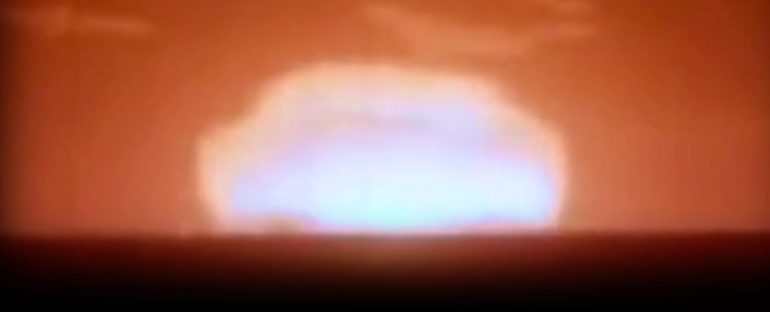The horrific extent of decades of controversial nuclear tests conducted by France in the islands of French Polynesia has been revealed in a new report, calculating the true scale of an unmitigated health disaster that researchers say has been hidden or ignored for decades.
Beginning in 1966, France began in secret a new round of nuclear tests at the Polynesian atolls of Moruroa and Fangataufa – a classified military program that continued for 30 years before ending amidst mass protests in 1996, almost 200 nuclear explosions later.
In a new two-year investigation conducted by an international group of security researchers, data scientists, and investigative journalists, the team stitched together and analyzed an archive of approximately 2,000 pages of now declassified French government and military documents.
In addition, they interviewed dozens of people of interest – including Polynesian inhabitants, former military personnel, and scientists – all to put together a clearer picture of the 193 nuclear tests fired at the Moruroa and Fangataufa sites, which up to now have been shrouded by secrecy and red tape.
With new 3D modeling based on the data to extrapolate the extent of the populated regions showered with radioactive fallout in the wake of the blasts, the report comes to uncomfortable and shocking conclusions.
“According to our calculations, based on a scientific reassessment of the doses received, approximately 110,000 people were infected, almost the entire Polynesian population at the time,” the researchers explain.
Evidence in the documentation suggests the contamination of radioactive particles settling onto populated regions was the basis for a ‘cluster’ of cancer cases affecting local Polynesians, which were secretly known to be linked to the tests by French military officials.
“It was when our elders began to die that we really started to ask questions,” says one woman, whose mother died from breast cancer in 2009.
While numerous unsafe tests were conducted in the first few years of the program, more powerful weapons fired in the 1970s presented even graver risks to the civilians of French Polynesia – with tests in 1971 and 1974 unleashing huge clouds of radioactive particles carried by the wind onto inhabitants who were never warned.
Military scientists at the time were aware that contamination on the ground, in the air, and in drinking water posed serious dangers – especially to vulnerable children, many of whom went on to develop cancer in the years following the tests.
Nonetheless, even when weather forecasts indicated the wind would carry the toxic clouds onto populated islands, officials did not delay testing. Most notoriously, an explosion in 1974 of a device called Centaure is estimated to have exposed 110,000 Polynesians to significant amounts of radiation. At the time, the total population of French Polynesia was 125,000.
Over the decades, internal military assessments of the exposure risk have consistently underestimated and denied the scope of the dangers, researchers say.
To date, only 454 people have ever received compensation from the French government in recognition of health impacts stemming from the testing, with over 80 percent of applications being rejected by authorities without explanation.
Based on the new findings, tens of thousands of people may now stand to rightfully claim compensation for these wrongs of the past, with the new data supporting their case with a giant trove of publicly available evidence, surfaced for the first time.
“There are about 110,000 people – and not 10,000, as the local health authorities suspect – who could potentially demand compensation from the French state, should they develop one of the recognized cancers,” the researchers write.
“Yet up until now, the number of Polynesians from the civilian population – that is, those who were not in the military nor among those specifically contracted as service providers – who have received compensation total just 63. That [is] a veritable fiasco.”
The damage done went far beyond native Polynesians. According to email correspondence exchanged within the French defense ministry, an estimated 2,000 of the 6,000 former military and civilian staff who were involved in the tests were also exposed, and either already have “or will contract a radio-induced cancer”, with compensation expected to cost in the amount of 100 million euros.
Much of the data assessed by the researchers comes from now declassified and open-access sources, and the researchers have provided details of their methodology, and pledged to further share their results with the public and the scientific community.
After decades of being hidden and denied, the truth of these terrible events is finally being heard.
“The state has tried hard to bury the toxic heritage of these tests,” Geoffrey Livolsi, editor-in-chief of nonprofit media organization Disclose, which helped produce the report, told The Guardian.
“This is the first truly independent scientific attempt to measure the scale of the damage and to acknowledge the thousands of victims of France’s nuclear experiment in the Pacific.”
The findings are summarized here, and a new book based on the research is available here.



